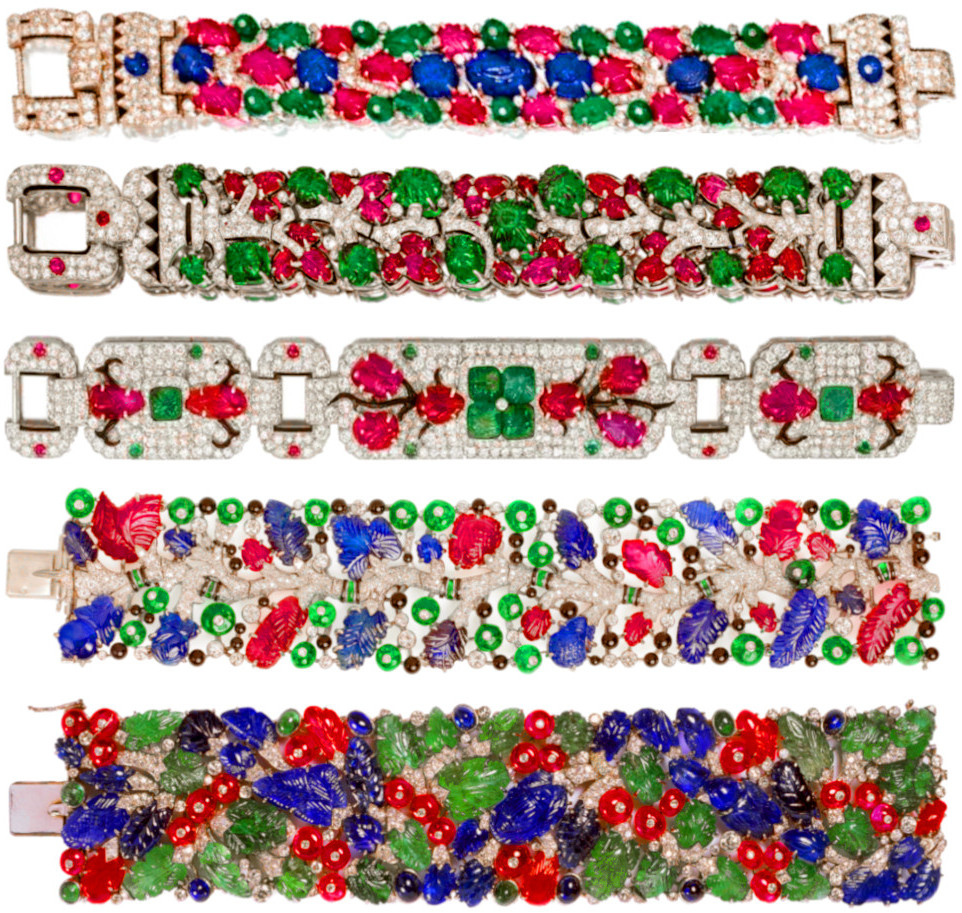Tutti Frutti by Cartier
By Sara Abey

Tutti Frutti by Cartier is a style of jewellery that I see as springing from the marriage of an exotic eastern aesthetic with meticulous western craftsmanship.
At the end of the 19th century, Cartier brothers, Pierre, Jaques and Louis, embarked on a successful journey to expand their grandfather’s small jewellery shop in Paris into a global brand. In doing so, they travelled extensively. Cartier became well-known amongst the Indian Maharajas and nobility, particularly with their resetting of old Indian family diamonds and coloured gems in the latest Parisian styles. In the process they were exposed to the traditional Indian jewellery styles with their vivid and often carved coloured gems. Cartier combined this newly acquired knowledge with their renowned delicate platinum mounting skills and design genius to create the widely admired Tutti Frutti style, as seen in the accompanying photos here.
This iconic style typically consists of rubies, sapphires and emeralds, sometimes pearls, onyx, jet, small diamonds and enamel. The coloured gems are carved as stylised leaves and other floral motifs. The first recorded piece was made in 1901, a necklace commissioned by Queen Alexandra of Great Britain to complement her Indian gowns. However, the design style was only officially launched in 1925 at the Exposition internationale des arts décoratifs et industriels modernes in Paris – the world fair which gave us the term ‘Art Deco’. The fair was organized by the French government to promote modern architecture and decorative arts. In 1925 Cartier called their new jewellery style ‘Pierres de Couleur’ (French for “coloured stones”), but within a decade or so it was colloquially known as ‘Tutti Frutti’ (from the Italian “all fruits”), a name that Cartier formally adopted in the early 1970s.
Although Cartier have made all types of Tutti Frutti jewellery from rings to brooches, bracelets are the most iconic. Particularly rare is the Tutti Frutti bandeau tiara made in London in 1928 specifically employing British craftsmen in an attempt to combat the then economic deflation and rising unemployment in the UK. As well as elegant, the bandeau is versatile and it can be unhinged to form two bracelets. This adaptable piece of art was acquired by the style icon of the time, Countess Edwina Mountbatten of Burma. The bandeau recently came on the market and the UK government banned the export of what they considered a highly significant example of British jewellery making. I haven’t found out how much was most recently paid for this tiara, but a Tutti Frutti bracelet from the collection of Evelyn H. Lauder and sold by Sotheby’s in New York in December 2014 to benefit the Breast Cancer Research Foundation attained a hammer price of US$ 2,165,000.
